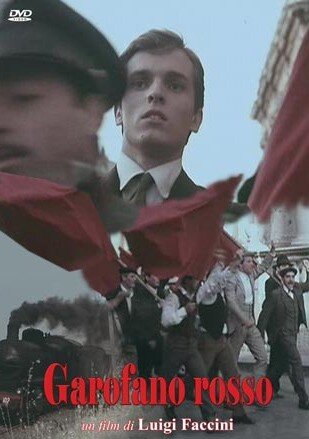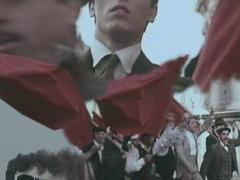The places of the film story: Red Garofano
Location inserted in the IWB register of the Sicily Region (The Places of the literary, television and filmic story) - Sector "Places of the southern identity of Sicily in the cinematographic transpositions of the literary text"
"Red Carnation", 1976, (from "Red Carnation" by Elio Vittoriani) directed by Luigi Faccini:
- SIRACUSA
Form:
RED GAROFANO 1976
Film script: Luigi Facini (freely inspired by The red carnation di Elio Vittorini). Cooperation: Piergiovanni Anchisi. Photographs: Arturo Zavattini. Scenography: Marco Dentici. Costumi: Clare Ghigi.
Still photographer: Angelo Frontoni. Mounting: Luciano Benedetti. Music: Mutual aid bank.
Mixing: Elio Guarrera. Directed by: Luigi Facini.
With: Miguel Bosè, Denis Karvil, Elsa Martinelli, Marina Berti, Carlo Cabrini, Maria Monti, Isa Barzizza,
Marisa Mantovani, Giovanna Di Bernardo, Giuseppe Atanasio, Giovanni Rosselli, Alberto Cracco
and many others.
A production Filmcoop. Financing EGC e art. 28.
Development and printing: Cinecittà. Shot in Kodak 35 mm color. Duration: 113 '.
Distribution: Italian film rental. First release on VHS with Fonit-zither (out of stock).
|
Syracuse, 1924. The story of an education, not just sentimental, the film tells the story of Alessio Mainardi, a student who comes from the interior of Sicily to attend high school. Get in touch with the young fascists who confusedly rebel against bourgeois values and hierarchies. He falls in love with a schoolmate, Giovanna, from whom he receives as a pledge a red carnation, a symbol of love and the underlying theme of the story. But the girl disappears. Alessio flaunts that carnation. The fascist students mock him. One of them, Tarquinio, is influenced, to the point of being involved in the violence against those who protest for the killing of Matteotti. After a stay at home, in the countryside, and the meeting with the family, especially the proximity of the peasant world and the furnace owned by his father, a former socialist, Alessio's ideas evolve. Back in the city, he finds new guests in the pension, young people who suggest a communist cell in formation and who seem to want to attract him into their group. Alessio crosses the threshold of a brothel for the first time and meets the evil Zobeida, of whom Tarquinio had fabled. It is his sexual initiation. Alessio now knows that he will never see Giovanna again. Tarquinius stole it from him. And he knows he will no longer have contact with his old fascist friends. The gun that Tarquinius hands him in the end will be refused. It will be picked up by the young Communists who will divide it among themselves, as a pledge of a future fight against fascism ...
It wasn't supposed to be Red carnation My identity card. Elio Vittorini, of course. But a film based on The women of Messina. In the double structure of that book there was a story that still touched us closely. That of veterans and uprooted people who, when the war was over, returned to their countries, with makeshift means, crossing mountains, crossing Italy in length, from north to south, dreaming of a more ethical than material regeneration. Wrecks full of uncertainties and resentments that the hope of a "new world" illuminated in the future. It was half of that book that interested me. It was that truck carrying its desperately vital load of humanity that interested me. On the Apennines, just before dark, the truck exhaled its last breath. His castaways, among whom glances, sufferings, expectations had just met, sought refuge among the dilapidated houses of an abandoned village, where settled. A dream took shape. Rebuild, plow, cultivate, reap, be reborn. A community took shape. That dream vanished in a few months, when the wheat was already earing in the hilly fields. The legitimate owners demanded the return of "their". A lanky messenger, wearing a long light trench coat, glasses well on his hooked nose, serpentine lips from which sharp words escaped, ordered the evacuation. The one hundred and one hundred diversities, even grim, sometimes cowardly guilty, which had come together and lent their face to the future, were dispersed ... text from: http://www.pipernofaccini.it/garofanorosso.htm |
Card insertion: Ignazio Caloggero
Photo: web
Information contributions: Ignazio Caloggero, Region of Sicily







